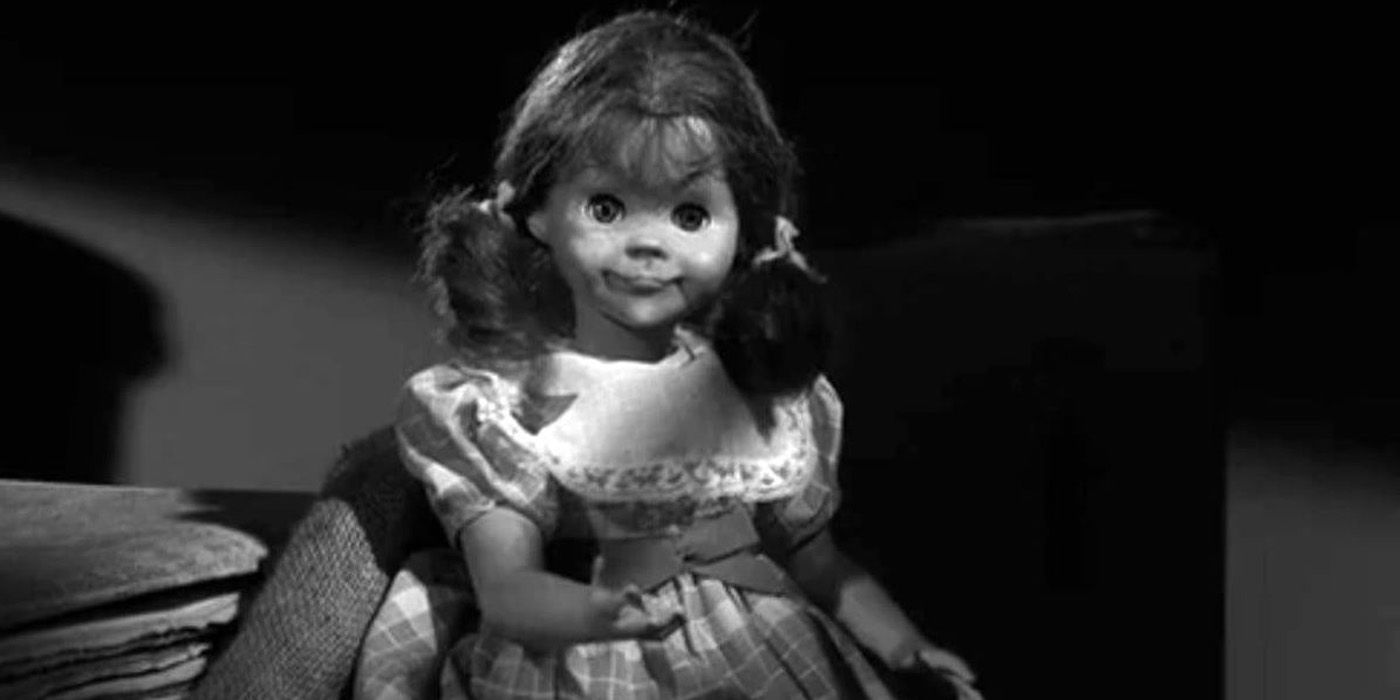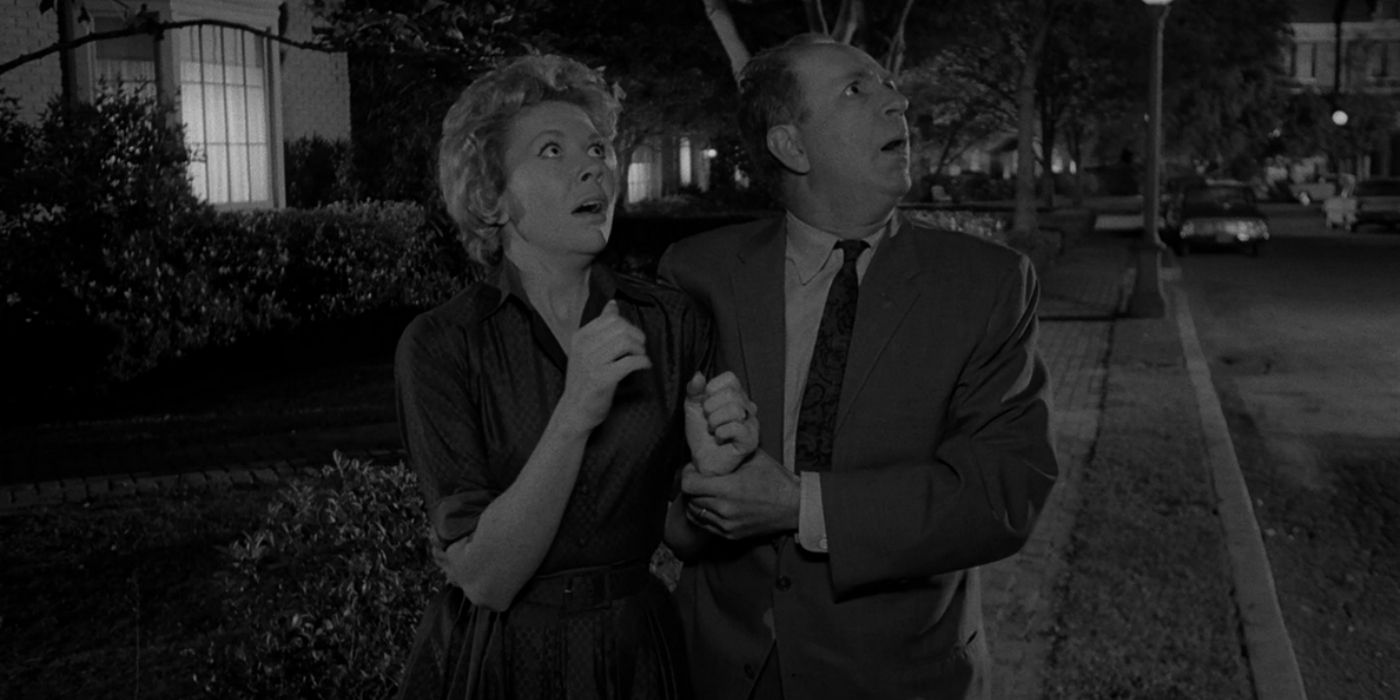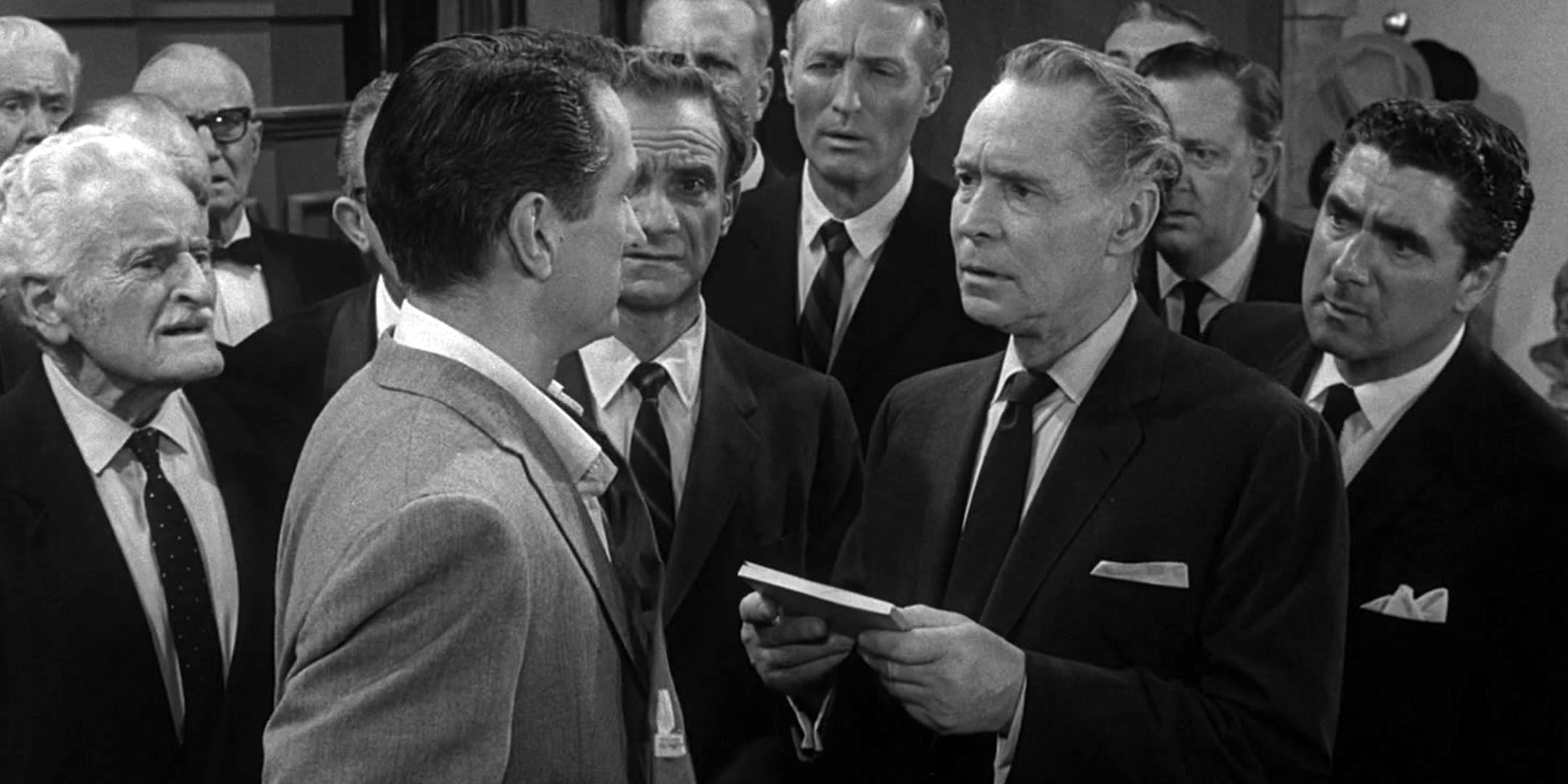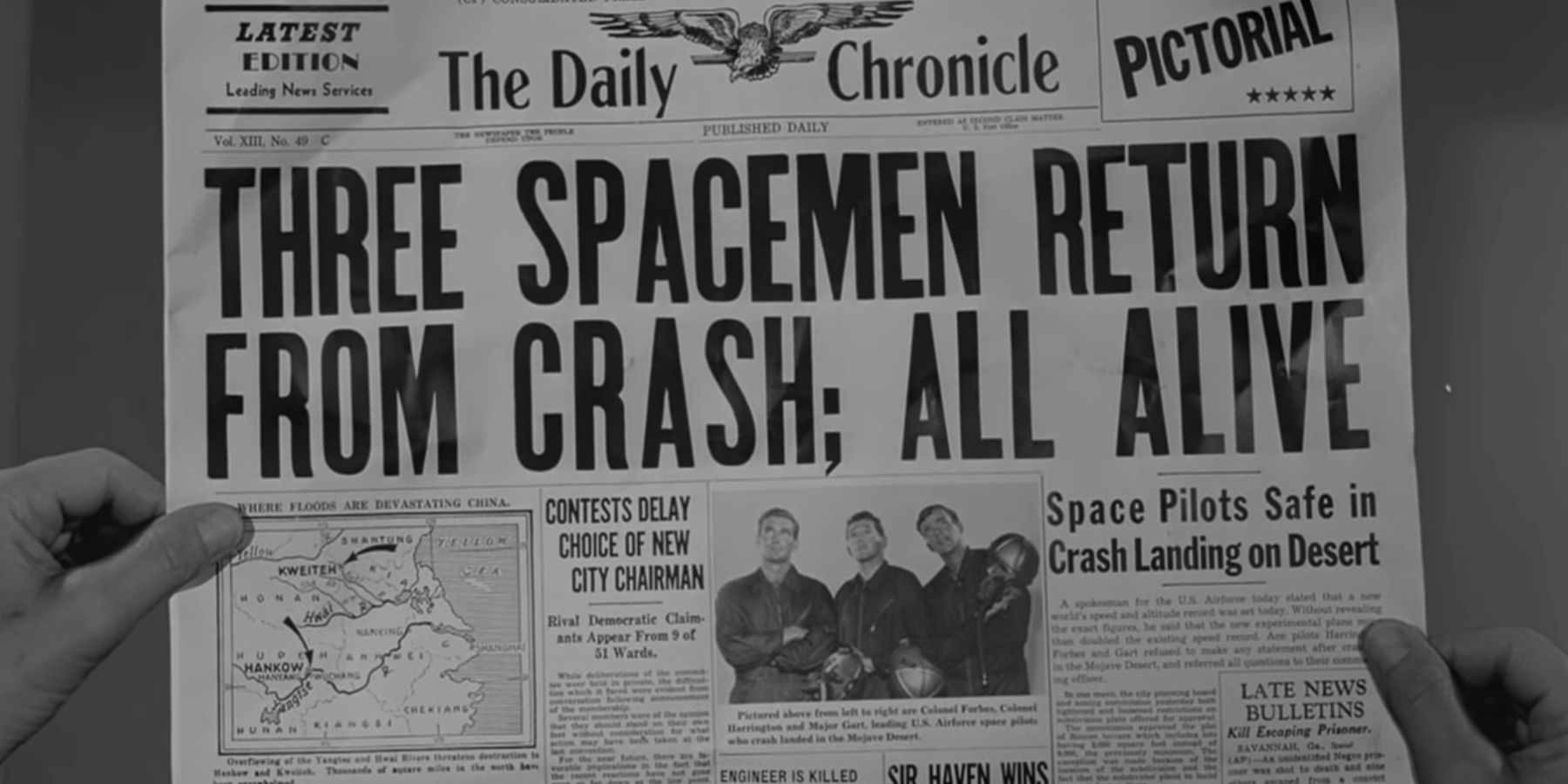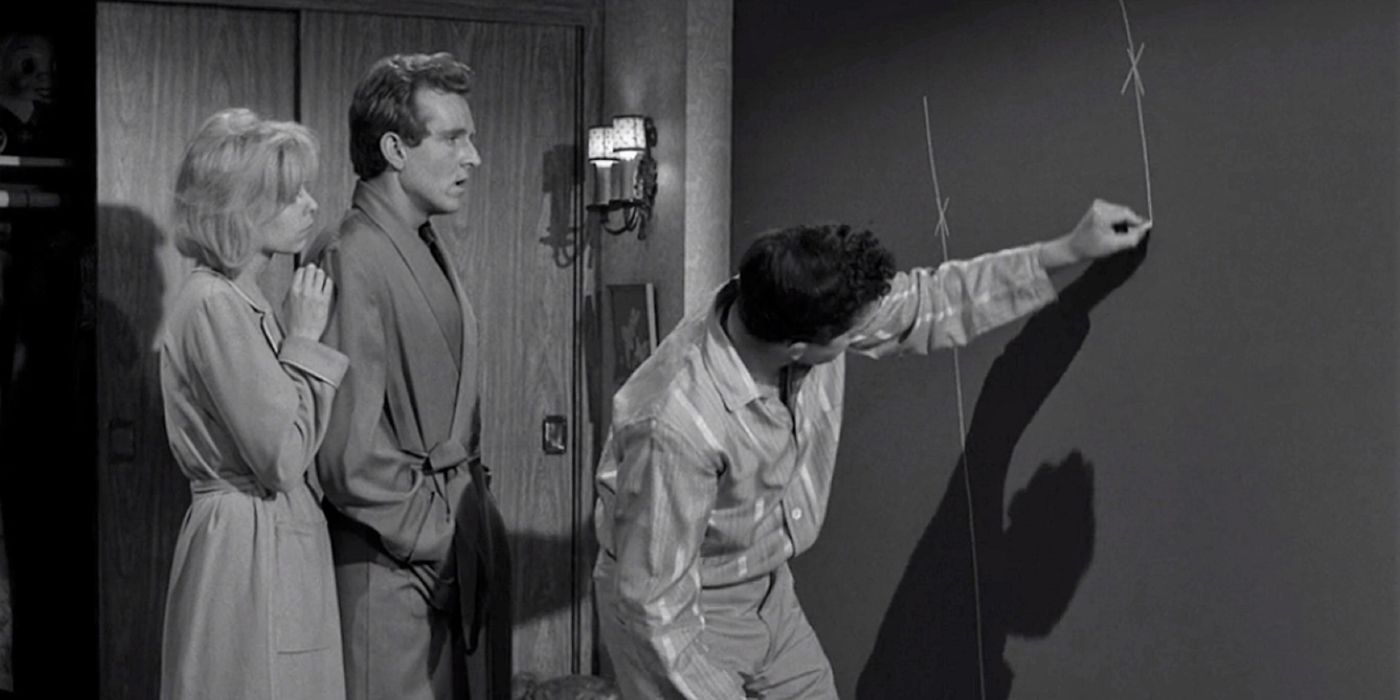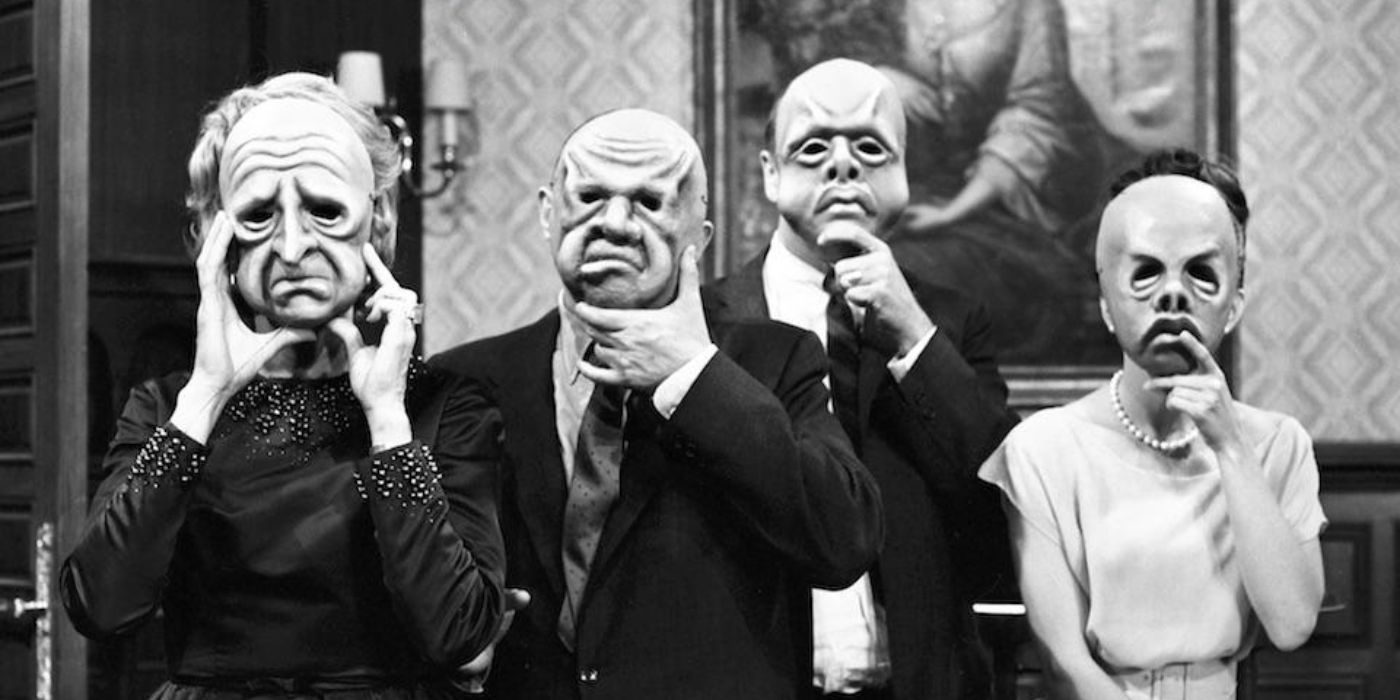The most unsettling episodes of <em>The Twilight Zone</em> linger in the minds of viewers, creating an atmosphere of unease that persists long after the credits roll. Rod Serling’s iconic anthology series cleverly intertwines social commentary with narratives steeped in fantasy and science fiction. Despite the limitations of the technology from its original airing, The Twilight Zone continues to deliver sequences that haunt audiences even today. Subsequent revivals of The Twilight Zone in the 1980s, 2000s, and the 2019 adaptation by Jordan Peele aimed to recapture the chilling essence of the original episodes, but few have managed to evoke the same emotional response that Serling’s timeless storytelling achieved.
The most chilling stories within The Twilight Zone often unfold with a disturbingly familiar twist, transforming what should be surreal into a reflection of our own reality. When stripped of their fantastical elements, these narratives resonate with our everyday lives, featuring characters we recognize, locales we traverse, and objects that fill our homes. The episodes of The Twilight Zone remain etched in our memories long after the television is turned off due to their ability to tap into profound feelings of horror and dread, awakening an unsettling awareness in our psyche that something is fundamentally amiss.
10
Encounter the Sinister Living Doll
Explore Season 5, Episode 6 of The Twilight Zone
The Twilight Zone features several episodes that revolve around inanimate objects that gain malevolent life, yet “Living Doll” stands out as the most unsettling. The infamous doll, Talky Tina, draws inspiration from the real-life Chatty Cathy doll of the 1960s. Initially presented as a gift for a young girl named Christie (Tracy Stratford), Talky Tina morphs into a malevolent force, targeting Christie’s abusive stepfather, Erich (Telly Savalas). Despite all of Erich’s attempts to rid the household of Talky Tina, she proves to be an unstoppable, terrifying entity.
The voice of Talky Tina was provided by June Foray, the same actress who voiced the original Chatty Cathy doll, adding an extra layer of discomfort for viewers during the episode’s initial airing.
The chilling way Talky Tina expresses her lethal intentions is inherently unsettling, and it draws a direct connection between “Living Doll” and the archetype of killer dolls seen in contemporary media. From the notorious Chucky in Child’s Play to the ominous toys depicted in the Toy Story franchise, we continue to see references to dolls that harbor sinister motives when we’re not aware. Although the original Chatty Cathy may have faded into obscurity, “Living Doll” prompts us to reconsider the seemingly innocent toys in our homes that speak or sing when activated.
9
The Monsters Are Due on Maple Street: A Reflection on Fear and Paranoia
Unpack Season 1, Episode 22 of The Twilight Zone
“The Monsters Are Due On Maple Street” is not disturbing due to shocking visuals or horrifying depictions, but rather because it resonates with the alarming reality of societal fears. While the episode features minimal alien involvement, the narrative of a community fractured by suspicion and animosity becomes increasingly relatable as our own world grows more polarized. This episode serves as a poignant allegory for the distrust directed at various modern identities. In this unsettling tale, no one emerges as a true victor, and the real aliens are those who exploit division and discord from afar.
According to the book Stories From The Twilight Zone, “The Monsters Are Due On Maple Street” features an epilogue revealing that everyone ultimately turned on each other, allowing the aliens to take control.
The pervasive feeling of dread in this episode stems not from the actual science-fiction elements—despite aliens being behind the power outage—but rather from ordinary people turning against one another. When anyone can be perceived as an alien, mistrust festers within a community that should ideally be unified. “The Monsters Are Due On Maple Street” illustrates how even the most well-intentioned individuals can become victims of their circumstances, rendering them much more susceptible to external manipulation.
8
The Silence: A Terrifying Bet with No Reward
Investigate Season 2, Episode 25 of The Twilight Zone
“The Silence” ranks among the most harrowing episodes of The Twilight Zone due to its shocking and ultimately meaningless twist. Strikingly, this episode lacks any overt sci-fi, fantasy, or horror elements, which amplifies its impact. At the core of the narrative lies a fruitless wager between two men: the loquacious Jamie Tennyson and the pompous Colonel Archie Taylor. The Colonel proposes a staggering $500,000 to Tennyson in exchange for a full year of silence, a challenge that Jamie accepts while being confined within the club to meet this condition. Despite Jamie’s commitment, Taylor continuously urges him to abandon the bet.
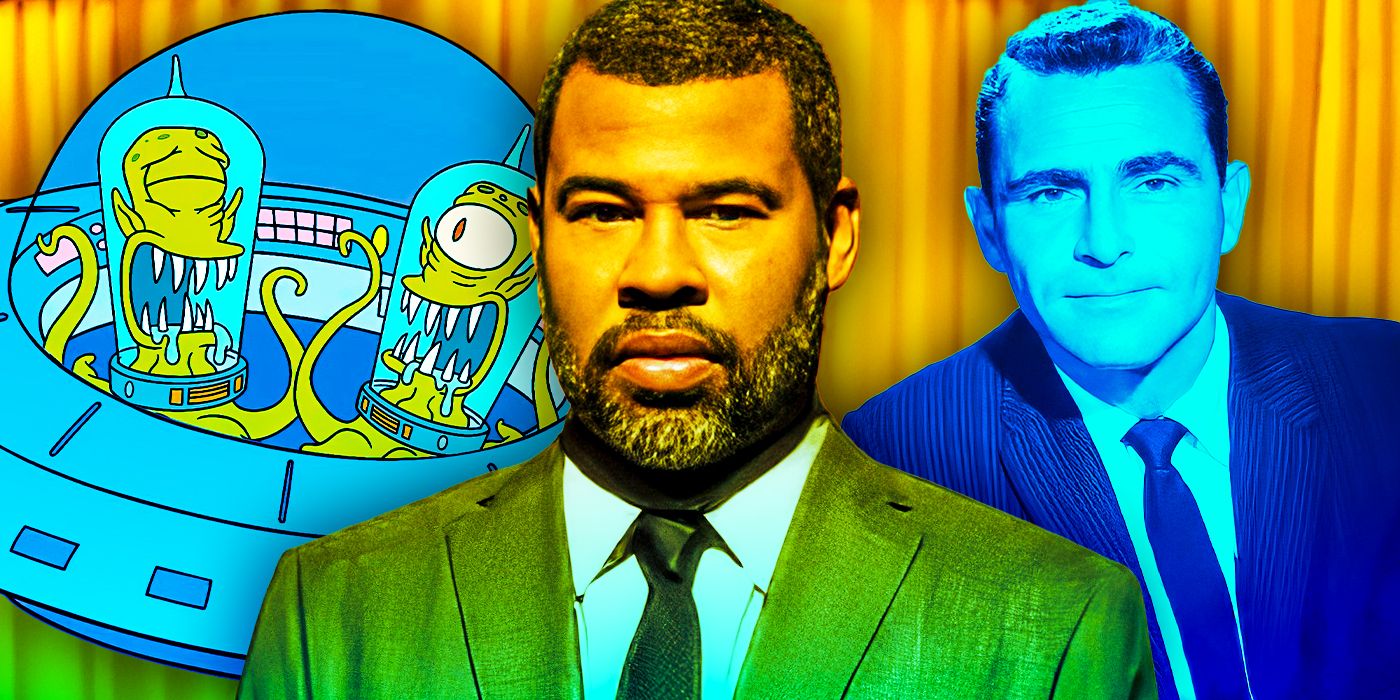
Related
Explore 10 Significant Ways The Twilight Zone Influenced Movies & TV Over the Past 65 Years
Since its inception over six decades ago, The Twilight Zone has continued to inspire countless storytellers due to its unique storytelling power and universal appeal.
The shocking conclusion of this episode reveals that Jamie has severed the nerves in his vocal cords to win the bet and alleviate his financial burdens. However, the true horror lies in the fact that Colonel Taylor lacks the promised funds; he has been merely pretending to be wealthy throughout. This chilling denouement highlights that Jamie’s desperation led him to a permanent and horrifying solution, and it underscores the futility of his sacrifices for a reward that ultimately proves empty.
7
And When the Sky Was Opened: The Frightening Loss of Reality
Analyze Season 1, Episode 11 of The Twilight Zone
“And When the Sky Was Opened” delves into the disturbing sensation of questioning the validity of one’s thoughts and memories. Following an experimental space mission, Colonel Gregg Forbes (Rod Taylor), Ed Harrington (Charles Aidman), and Major William Gart (James Hutton) return to Earth, but Harrington begins to feel an unsettling disconnect, as if he were never meant to return. Evidence of Harrington’s existence begins to vanish, with only Forbes recalling that Ed was real and desperately trying to convince others of Harrington’s place in the crew.
It’s Gart’s turn, then, to inherit the madness of remembering a man who doesn’t exist.
Tension escalates throughout “And When the Sky Was Opened,” revealing Gregg’s gradual descent into madness. When Forbes confronts Gart, who is still in a hospital bed, to ascertain whether the Major remembers Harrington, it dawns on Forbes that perhaps Harrington was correct; they may not have been meant to return. Gart then becomes the next victim of the madness, grappling with the realization that a colleague once known to him has vanished. This episode explores not just Forbes’ psychological breakdown, but also the existential question of whether any of the astronauts were ever truly real—and if they were, what fate befell them?
6
Little Girl Lost: The Terrifying Dimension of Childhood
Dissect Season 3, Episode 26 of The Twilight Zone
“Little Girl Lost” is particularly unsettling as it centers around a frightened, potentially endangered child: 6-year-old Bettina Miller, who can be heard but not seen because she has slipped into another dimension. Bettina is oblivious to her situation, while her parents are filled with dread, fearing that their daughter might be in genuine peril. Unlike other episodes of The Twilight Zone that depict punishment for undesirable behavior with disturbing outcomes, “Little Girl Lost” places an innocent child and a family dog in jeopardy by trapping them in the elusive “fourth dimension“, just beyond the reach of loving parents.
As Bettina’s father, Chris, takes the perilous step of entering the dimensional rift, “Little Girl Lost” introduces a new layer of horror. The episode employs groundbreaking filming techniques to depict the bizarre, distorted terrain of the fourth dimension, creating a visual experience that is both disorienting and echoing. This episode is unsettling for both children and adults alike: children may fear the idea of being alone in an alternate dimension, while adults grapple with the horrifying notion that a child in their care could simply vanish without explanation.
5
Nightmare at 20,000 Feet: The Ultimate Fear of Flying
Examine Season 5, Episode 3 of The Twilight Zone
There’s a compelling reason why “Nightmare at 20,000 Feet” remains one of the most renowned and frequently revisited episodes of The Twilight Zone; it is undeniably disturbing. The character Robert Wilson (William Shatner) is portrayed as somewhat unstable, leading viewers to question the reliability of his perceptions when he claims to see a gremlin on the wing of the airplane. This creature, both iconic and terrifying, features a grotesque face and a menacing demeanor. The narrative unfolds in such a way that the gremlin could indeed be real, particularly given the ambiguous ending that leaves viewers wondering if Wilson’s experiences were merely figments of his imagination.
|
Remakes of “Nightmare at 20,000 Feet” |
|||
|---|---|---|---|
|
Version Title |
Episode |
Starring |
Year Made |
|
“Nightmare at 20,000 Feet” |
Season 5, Episode 3 |
William Shatner |
1963 |
|
“Nightmare at 20,000 Feet” |
The Twilight Zone movie |
John Lithgow |
1983 |
|
“Nightmare at 30,000 Feet” |
Season 1, episode 2 |
Adam Scott |
2019 |
“Nightmare at 20,000 Feet” is a memorable episode of The Twilight Zone because it encapsulates the primal fear of flying, using the gremlin as a metaphor for our deepest anxieties. The narrative externalizes paranoia into a tangible creature that we can fear, giving it a disturbing visage—one that many of us hope never to encounter when peering out of our airplane windows. The visceral performance of a pre-Star Trek William Shatner enhances the gremlin’s reality, despite it seeming somewhat cheesy by contemporary standards.
4
The Masks: A Gruesome Exploration of Inner Demons
Investigate Season 5, Episode 25 of The Twilight Zone
In “The Masks,” the wealthy aristocrat Jason Foster invites his daughter and her family, the Harpers, to his estate to celebrate one final Mardi Gras before his impending death. As part of his last request, Foster insists that his family don grotesque masks that represent their innermost flaws. They must wear these masks until midnight to inherit his wealth, but when the clock strikes twelve, the Harper family’s faces become permanently transformed to resemble the masks they wore.
The masks and the prosthetic makeup designs featured in “The Masks” were crafted by MGM makeup artist William Tuttle, who would later receive an Academy Award for his work.
The makeup design of “The Masks” evokes a specific brand of body horror, making it an especially disturbing episode of The Twilight Zone. The masks themselves are devoid of humanity and vision, yet when the Harpers remove them, it becomes evident that their grotesque faces are now a permanent fixture. It’s terrifying to contemplate that the Harpers are forever trapped with their new, horrifying visages, even if such a fate serves as just punishment for their despicable behavior. They may gain their inheritances, but at what cost?
3
Number 12 Looks Just Like You: The Dangers of Conformity
Analyze Season 5, Episode 17 of The Twilight Zone
In “Number 12 Looks Just Like You,” the Transformation represents a futuristic rite of passage where teenagers select new identities from a limited catalog of acceptable models, granting them the benefits of slowed aging and immunity to diseases. Marilyn (Collin Wilcox) is the last of her peer group to undergo this procedure, as she fears that it will strip her of her humanity, and she is correct—because the Transformation erases not just physical appearances but also individuality and personality. Despite her vehement objections, her doctor ultimately forces the Transformation upon her.
The limited selection of potential bodies is so severe that all adult characters in “Number 12 Looks Just Like You” are portrayed by just two actors: Suzy Parker and Richard Long, who wear name tags to signify their different roles.
The horror permeating “Number 12 Looks Just Like You” is palpable throughout the episode as adults impose conformity on a defiant young woman. However, the most disturbing moment occurs at the end, when Marilyn emerges from the Transformation with a beaming smile. She is genuinely happy that every trace of her uniqueness has been obliterated, thrilled to assume the same model of body as her best friend Valerie. The bleakness of this uniform society is distressing not only due to its enforced conformity but also because of the absence of personal agency and bodily autonomy, leading to the irreversible loss of the real Marilyn.
2
Eye of the Beholder: The Facade of Beauty and Normalcy
Investigate Season 2, Episode 6 of The Twilight Zone
“Eye of the Beholder” masterfully intertwines the body horror and makeup effects seen in “The Masks” with the theme of enforced conformity found in “Number Twelve Looks Just Like You,” crafting an extraordinarily unsettling episode of The Twilight Zone. In this episode, Janet Tyler is a young woman whose face is concealed with bandages after yet another failed attempt to correct her facial disfigurement. The faces of the hospital staff are likewise obscured through clever camera angles and lighting tricks, maintaining the mystery of the story until the climactic reveal that Janet is conventionally attractive, while everyone else’s appearances are horrifying.

Related
The Twilight Zone Never Topped This Season 2 Episode That Only Got Better With Time
It’s impossible to overstate how many episodes of The Twilight Zone are iconic, but one stands out as the absolute best – and it came in season 2.
As a quintessential episode of The Twilight Zone, “Eye of the Beholder” is unsettling even without its twist, maintaining its fright even when the viewer is aware of the outcome. Directed by Douglas Heyes, “Eye of the Beholder” builds suspense gradually, keeping audiences speculating as the narrative unfolds through eerie, disembodied voices and tense camera angles. The conclusion sees Janet exiled to live among those who resemble her, framing it as a positive outcome, yet it serves as a sobering commentary on the consequences of segregating communities.
1
It’s A Good Life: A Childhood Nightmare Unleashed
Delve into Season 3, Episode 8 of The Twilight Zone
“It’s A Good Life” distorts the idyllic images of pastoral living and the innocence of childhood, transforming them into a deeply unsettling narrative that ranks among the finest episodes of The Twilight Zone. Little Anthony Fremont (Billy Mumy) possesses extraordinary, godlike abilities that grant him absolute power over the residents of Peaksville, Ohio. Anthony constructs a reality that caters to his cruel, childlike whims, glorifying violence and isolating the town from the outside world. As resources dwindle, the threat of death looms, yet Anthony’s capacity to make people disappear to the cornfield ensures that no one can safely oppose him.
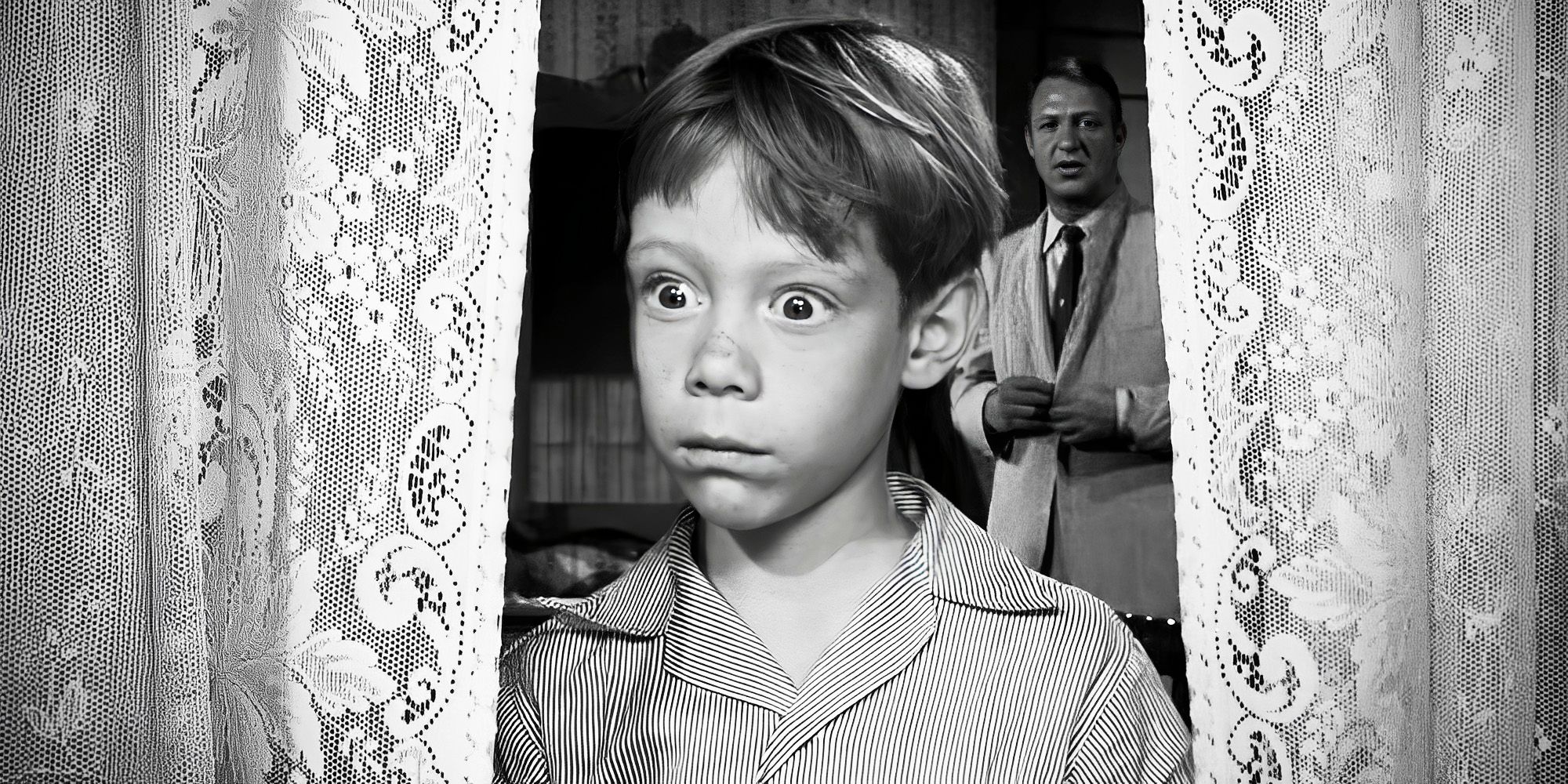
Related
Only 1 Episode Of The Twilight Zone Ever Got A Sequel, And It’s Still One Of The Franchise’s Creepiest Stories 64 Years Later
One classic Twilight Zone episode is the only one to have ever gotten a sequel, and it continues to be one of the show’s scariest stories.
Undoubtedly, “It’s A Good Life” is disturbing for its portrayal of Anthony’s tyrannical rule over his small community, effectively making him a laughing dictator. The episode is rife with unsettling imagery, particularly when Anthony’s neighbor Dan (Don Keefer) gathers enough courage to confront Anthony, branding him a monster. In retaliation, Anthony does not merely make Dan disappear; the scene cuts to a shadow of a jack-in-the-box on the wall, suggesting that Dan has been grotesquely transformed into something inhuman. This haunting episode of The Twilight Zone lingers in the minds of viewers, leaving them with nightmares long after the screen fades to black.

[nospin]Here you can find the original article; the photos and images used in our article also come from this source. We are not their authors; they have been used solely for informational purposes with proper attribution to their original source.[/nospin]



